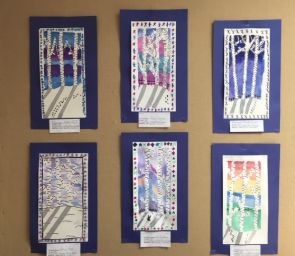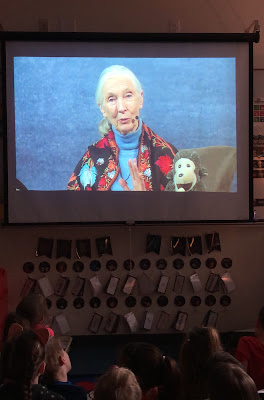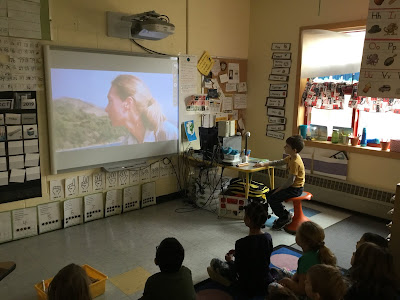First, the K-4th Grade Art Show is now up at the Carpenter Carse Library! This show is in the Community Room and will be up until May 14. The Opening Reception is tomorrow, May 1, from 5:00-6:00 pm.
The students of Hinesburg Community School have used many art mediums this year; paint, oil pastel, markers, clay and paper mache. They have learned about many famous artists and art of many cultures. Here's a sampling:
Kindergarten -1st Grade
Eric Carle Collages
Bold Line Fish
2nd Grade
2nd Graders learned about artwork done by Ted Harrison who used bold lines and bright colors in his paintings to create Chalk Landscapes.
3rd Grade
Fruit and Vegetable Self Portraits
The students looked at the artwork of Giuseppe Arcimboldo, an Italian painter who painted imaginary heads using fruits, vegetables, flowers, fish and books.
The students looked at the artwork of Giuseppe Arcimboldo, an Italian painter who painted imaginary heads using fruits, vegetables, flowers, fish and books.
4th Grade
Winter Birch Trees Paint and Markers
Students in grades 4-6 looked at and discussed artwork by Wayne Thiebaud and learned that his work focused on food. Check out these inspired creations!
Paper Mache Mini Pizzas 4th Grade
Paper Mache Mini Pizzas 4th Grade
Paper Mache Donuts 5th Grade
Paper Mache Ice Cream Cones 6th Grade
7th Grade
Musical Collage in the style of Romare Bearden for Black History Month
The 7th-grade students looked at artwork by an African American artist named Romare Bearden. He focused on African American history and music in his collage pieces of work.
The 7th-grade students looked at artwork by an African American artist named Romare Bearden. He focused on African American history and music in his collage pieces of work.
8th Grade
Color Value Cityscape and Landscape
The 8th-grade students looked at cityscapes and landscapes that showed the skyline and mountains getting lighter as the fade into the background.
Thank you to both of the talented art teachers, Sonny and Rebecca, for their hard work, vision, and creativity as they inspire our students.

























